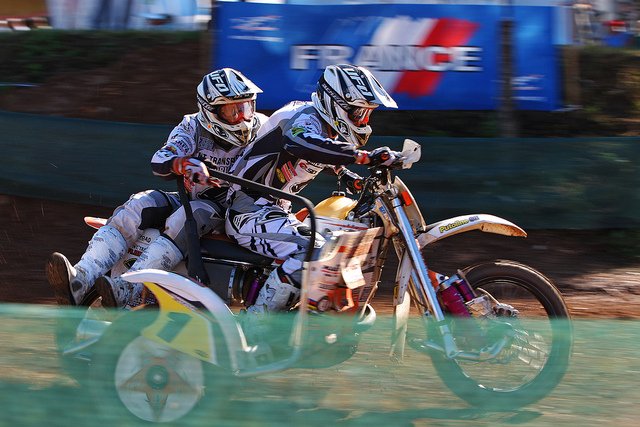There are photos of riders with bandaged noses proudly holding up medals. Or was it the passenger holding the medal? It’s difficult to say. This is sidecarcross, another in a series of twists on the original game.
Like motocross, there is a motorcycle and an arena track made of dirt. Unlike motocross, there’s a passenger standing in a sidecar. In this sport, the bike can’t lean on the turns, and that’s where the passenger comes in. He’ll spend the race leaning, lunging and shifting his weight in order to keep the bike moving efficiently in the direction of victory.
Importantly, as sidecarcross is an international sport, there is no regulation for which side of the bike the car needs to be affixed. Teams generally put the sidecar on the side the passenger is accustomed to in his home country, and so crowding is bound to happen.
The kinetics of sidecarcross are so outlandish that at times the passenger needs to lean out just to counter the forces building and conspiring to fling the entire machine from the track. In fact, many sidecarcross enthusiasts will declare the center of skill in the sport rests with the passenger; the driver being a simple catalyst for the circus performance that wins the race.
The largest venues for sidecarcross championships can be found in eastern and northwestern Europe, while North America and Australia hold smaller events.
A multi-day championship arena race is held each year in Europe, and this year the Germans played host. The Dutch lay claim to sidecarcross superstar driver Daniël Willemsen, who has earned the World Champion title nine times. Latvian and Swiss crews have also dominated the spectacle, becoming world champions six and four times respectively.
The origins of the sport are traced to the United Kingdom in the 1930’s, from which the earliest known photos of actual races have been found.
Photo credit: Flickr Creative Commons








